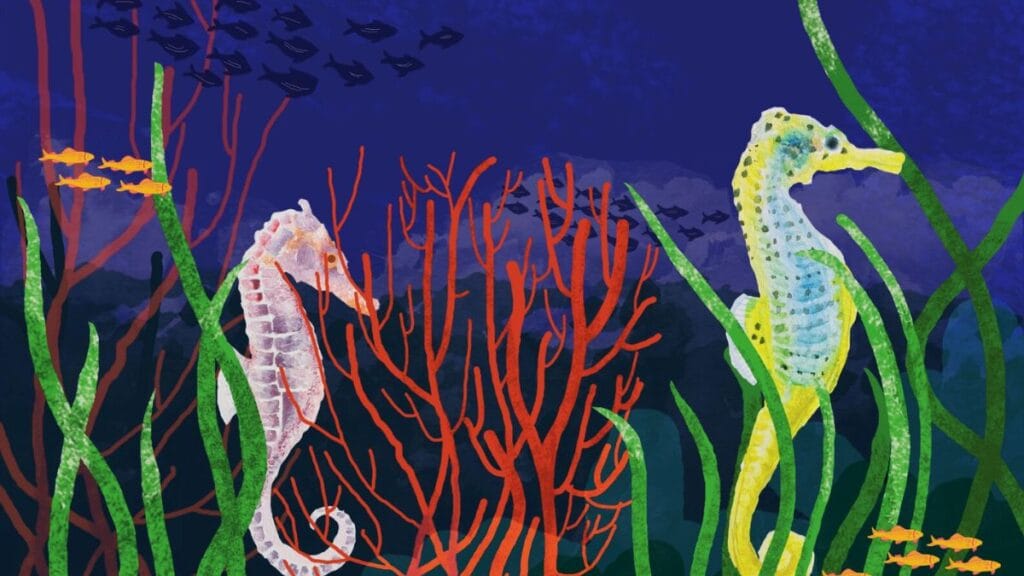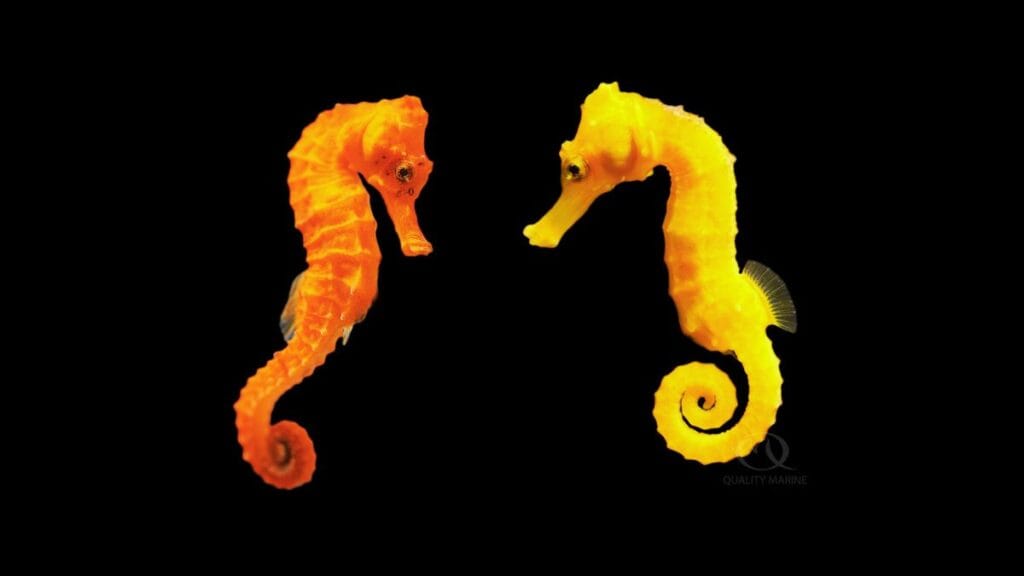According to the laws of nature, only females have the ability to give birth and bring a new life to this world. But male animals belong to the Syngnathidae family known for fertilizing eggs.

Sound interesting? Yes, it must be. Have you ever heard of Seahorses? Seahorses are the only creatures in this world that defy the rule of nature and males become pregnant and give birth to the young ones.
However, the question arises of how and why male seahorses give birth and what their reproductive strategy is. Seahorses have a unique adaptation strategy that is known as “male pregnancy”.
How Do Male Seahorses Get Pregnant?
Seahorses are small marine fishes that belong to the family “Syngnathidae” and are known for leaving the gestation to the males. Male Seahorses possess a uterus-like pouch and placenta in their tails; probably an anomaly to the animal kingdom.
Despite having a uterus and placenta, male Seahorses produce sperm instead of eggs. The female Seahorses, after completing an elaborate courtship for hours or days, transfer their mature eggs to the male’s brood pouch, where the eggs are fertilized.
By the end of the gestation period, which lasts two to four weeks, the males’ abdomen area undulates rhythmically and ejects from a few dozen to thousands of fully formed baby Seahorses into the water.
After transferring the eggs to the males, female Seahorses invest their energy again in reproduction and reproducing more eggs. Seahorses usually have only one mating partner and each pair continuously produces and broods eggs throughout the breeding season, mainly between April and October.

Despite giving birth to thousands of babies, only 0.5% of the baby seahorses survive to adulthood. Thus, the parent seahorses breed all the seasons to maximize the chance of having more babies.
Researchers have found that the Seahorses provide the eggs with oxygen and other nutrients, unlike other reptiles and mammals. The female labour and the birth of Seahorses are primarily driven by a hormone called “Oxytocin” which contracts the smooth muscles of the uterus and ejects the babies.
However, the researchers have also found that muscle tissue of the seahorse brood pouch did not respond to the fish version of oxytocin and males contain three small bones at the opening of the brood pouch where the anal fin (very small or absent in females) joins the skeletal muscles.
What Is Seahorse?
In case, you haven’t heard of Seahorses, they are small marine bony fishes in the genus Hippocampus. Seahorses also known as “Sea Monsters” have the head and neck similar to horses.
Seahorses are generally found in tropical and temperate saline water around the world and shelter in seagrass beds, estuaries, coral reefs, and mangroves.
Indonesia, Papua New Guinea, Philippines, and Malaysia are a few of the destinations where you can visit to watch Seahorses. Despite having 47 species of Seahorses, their existence is in danger due to habitat destruction, overfishing, and pollution.
Also Read: Humphead Wrasse: 6 Best Places to Find Napoleon Wrasse
Also Read: These Prehistoric Penguins Were Taller Than LeBron James